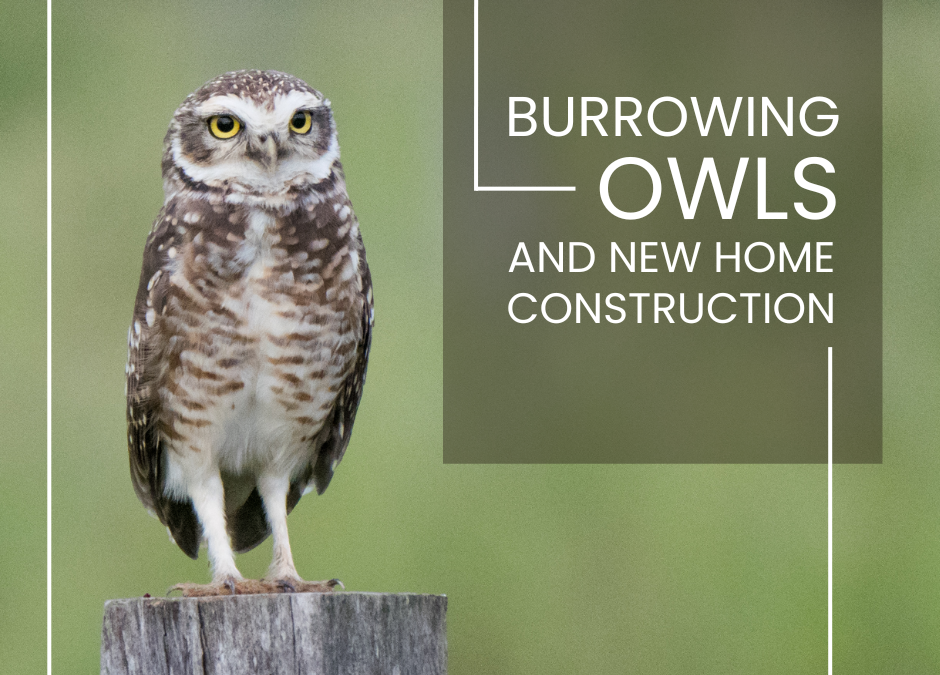Cape Coral is not only known for its picturesque canals and vibrant lifestyle but also for its unique wildlife, particularly the burrowing owls. These small, ground-dwelling owls have become a symbol of the city, contributing to its charm and biodiversity. However, as Cape Coral continues to grow with more people seeking to build their dream homes, the interaction between new construction and burrowing owl habitats presents both challenges and opportunities.
Understanding the Burrowing Owl
The burrowing owl (Athene cunicularia) is a small species, notable for its long legs and tendency to live in underground burrows in open, grassy areas, like empty lots. Unlike most owls, they are active during the day, making them a common sight in local neighborhoods. Their presence in Cape Coral is significant, with the city hosting one of the largest populations of burrowing owls in Florida.
Regulations and Protections
Recognizing the importance of coexisting with these unique creatures, the City of Cape Coral has implemented regulations to protect burrowing owls. During nesting season, from February 15th to July 10th, construction activities near known burrow sites are restricted. Home builders are required to conduct wildlife surveys and obtain permits before proceeding with construction. These measures aim to minimize the impact on the owls while allowing for responsible development.
The City of Cape Coral’s procedures for building permits involving burrowing owl habitats involve several key points:
- Protected Status: Burrowing owls and their nests are protected by state and federal laws. Even inactive burrows cannot be destroyed without a permit from the Florida Fish and Wildlife Conservation Commission (FWC).
- Site Inspection: Prior to permitting, the site must be inspected for burrows, and any found must be reported on the burrowing owl/gopher tortoise affidavit.
- Buffer Zones: During construction, a buffer zone of at least 10 feet (or 33 feet during nesting season) must be maintained around the burrow.
- Nest Removal Permits: FWC may issue a nest removal permit for an owl burrow, but construction may have to wait until the end of the nesting season (February-July) if the burrow is active. An incidental take permit application must be submitted and approved to obtain a permit.
- Mitigation Measures: If a burrow is destroyed, mitigation measures such as paying fees or creating a new “starter burrow” on the property may be required.
- Construction Adaptations: Minor design and timing adjustments may be needed to comply with regulations to protect owls during construction.
These regulations aim to balance development with the conservation of this species, emphasizing that properties with owls are still developable while ensuring the species is not pushed further towards endangered status. By incorporating these procedures into our construction planning, Sposen ensures compliance with laws designed to protect the burrowing owls.
Impact on Construction Timelines
The presence of burrowing owls can lead to delays in construction, especially during their nesting season. Sposen works closely with the City of Cape Coral and the Florida Fish and Wildlife Conservation Commission to minimize delays while ensuring compliance with regulations. We keep our clients informed about potential impacts on construction timelines and remain dedicated to ensuring that our building practices not only create your dream home but also contribute positively to the preservation of Cape Coral’s unique wildlife and natural beauty.
Additional Resources:

